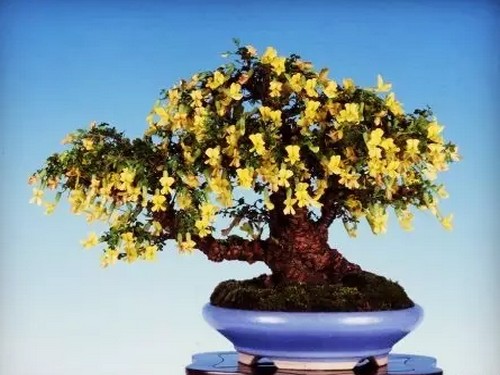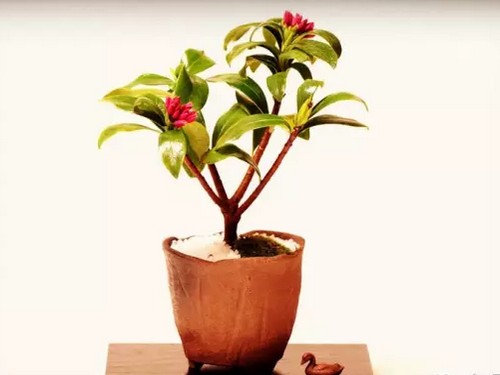Selection and cultivation of Caragana bonsai
Caragana is dried like ancient iron, covered with golden trees when it blossoms, and should be placed on the edge of the forest, by the side of the road or by the building. This species has bright green leaves and beautiful flowers. It can be planted next to rocks, roadsides, hedges or bonsai materials in the garden. Caragana bonsai shape, only in the Qiu branch, the posture of quaint for the best, can also be made into branches and leaves profusion drooping trend; or root exposed claws, show its old state, or cut branches and leaves, showing a cloud, in order to achieve the effect of beautiful flowers. It is also a good nectar plant and soil and water conservation plant.

Caragana has beautiful branches and leaves, beautiful flowers and colors, such as sparrows and golden flowers, so it is also called broom, which is suitable for bonsai production.
Artificial reproduction:
Can be used cutting, ramet, striping, sowing and other methods of propagation, generally mainly by cutting.
From February to March, the hardwood from last year can be used, or in the rainy season, the cuttings are cut into 8-12 cm, and the depth is 1 cm. After planting, B sets up a shed for shade and waters the right amount.
After rooting, remove the shade shed, fully accept the light, grow healthily, and the survival rate is higher. Ramet propagation is carried out from February to March in spring. Sowing and propagation were carried out from March to April, and the germination rate was high when the seeds were soaked in warm water (40 ℃) before sowing. For bonsai users, you can also dig old piles in the mountains for many years to make shapes with faster results. It is better to choose those who are old and work alone.
Field excavation:
In addition to the cultivation of small seedlings, the piles for bonsai can also be excavated in the mountains for many years, and those with good appearance can be selected to achieve the effect of rapid prototyping. The mining time can be carried out throughout the dormant period and the rainy season. The method of mining is to cut off most of the aboveground stems, then remove the topsoil, find out the growth direction of the main root, and dig patiently and meticulously along the trend of the main root, which is beneficial to the protection of the root system and reduce the damage.
Dug out the root system is often very long, cultivation can not be short cut, but put it in the shade, wait for the root slightly dry plate shape, used to replace the root dry, and then on the pot planting, do not wet the root disc qu, otherwise easy to break. In this way, the roots are intertwined and pleasing to the eye.
Time: 2019-06-02 Click:
- Prev

Acquisition of pile material of bonsai in Chinan
Red Nan plant is shorter, branches are dense and flexible, leaves are small, thick green and shiny, the four seasons are green, pink velvet globular flowers are in full bloom in early summer, set off melon seed-like green leaves, the tree is extremely beautiful. The old pile in the mountain field, after cultivation and processing, can make Hengke flat and hierarchical, such as the shape of clouds, elegant and simple.
- Next

Material selection and cultivation of Ruixiang bonsai
Ruixiang, made in China, is a traditional famous flower in China. Daphne odorifera blossoms in early spring and has a rich fragrance. Its variety of Phnom Penh incense is one of the best in Ruixiang, so it has peony flowers, and Phnom Penh is the best. Flowering from March to May, head terminal, Corolla yellow-white to lavender, such as lilac-shaped, strong fragrance
Related
- Fuxing push coffee new agricultural production and marketing class: lack of small-scale processing plants
- Jujube rice field leisure farm deep ploughing Yilan for five years to create a space for organic food and play
- Nongyu Farm-A trial of organic papaya for brave women with advanced technology
- Four points for attention in the prevention and control of diseases and insect pests of edible fungi
- How to add nutrient solution to Edible Fungi
- Is there any good way to control edible fungus mites?
- Open Inoculation Technology of Edible Fungi
- Is there any clever way to use fertilizer for edible fungus in winter?
- What agents are used to kill the pathogens of edible fungi in the mushroom shed?
- Rapid drying of Edible Fungi

